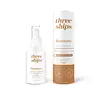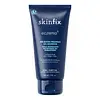What's inside
What's inside
 Key Ingredients
Key Ingredients

 Benefits
Benefits

 Concerns
Concerns

 Ingredients Side-by-side
Ingredients Side-by-side

Water
Skin ConditioningGlycerin
HumectantCaprylic/Capric Triglyceride
MaskingSaccharomyces/Xylinum/Black Tea Ferment
Skin ConditioningCetearyl Alcohol
EmollientStearic Acid
CleansingDiheptyl Succinate
EmollientGlyceryl Stearate
EmollientSodium Lactate
BufferingCucumis Sativus Extract
Skin ConditioningHydrolyzed Jojoba Esters
Skin ConditioningXanthan Gum
EmulsifyingTocopherol
AntioxidantCapryloyl Glycerin/Sebacic Acid Copolymer
Skin ConditioningDecyl Glucoside
CleansingSodium Citrate
BufferingCaprylhydroxamic Acid
Glyceryl Caprylate
EmollientSodium Hydroxide
BufferingWater, Glycerin, Caprylic/Capric Triglyceride, Saccharomyces/Xylinum/Black Tea Ferment, Cetearyl Alcohol, Stearic Acid, Diheptyl Succinate, Glyceryl Stearate, Sodium Lactate, Cucumis Sativus Extract, Hydrolyzed Jojoba Esters, Xanthan Gum, Tocopherol, Capryloyl Glycerin/Sebacic Acid Copolymer, Decyl Glucoside, Sodium Citrate, Caprylhydroxamic Acid, Glyceryl Caprylate, Sodium Hydroxide
Water
Skin ConditioningDecyl Glucoside
CleansingCaprylyl/Capryl Glucoside
CleansingCoco-Glucoside
CleansingGlyceryl Oleate
EmollientGlycerin
HumectantXanthan Gum
EmulsifyingCitric Acid
BufferingJojoba Oil/Macadamia Seed Oil Esters
Skin ConditioningTrisodium Ethylenediamine Disuccinate
Squalene
EmollientColloidal Oatmeal
AbsorbentHelianthus Annuus Seed Oil
EmollientCocos Nucifera Oil
MaskingAmylopectin
Pentylene Glycol
Skin ConditioningPropanediol
SolventPhytosteryl Macadamiate
Skin ConditioningLithothamnion Calcareum Extract
Skin ConditioningLecithin
EmollientLactic Acid
BufferingTocopherol
AntioxidantPhytosterols
Skin ConditioningAcetyl Glutamine
Skin ConditioningSodium Lauroyl Lactylate
EmulsifyingChamomilla Recutita Flower Extract
MaskingCalendula Officinalis Flower Extract
MaskingHydrogenated Vegetable Glycerides Citrate
EmollientBacillus/Soybean Ferment Extract
Skin ConditioningCaprylyl Glycol
EmollientCeramide NP
Skin ConditioningPhytosphingosine
Skin ConditioningCeramide AP
Skin ConditioningCholesterol
EmollientCarbomer
Emulsion StabilisingSodium Hyaluronate
HumectantFolic Acid
Skin ConditioningOligopeptide-1
Skin ConditioningOligopeptide-2
Skin ConditioningOligopeptide-3
Skin ConditioningHexapeptide-11
Skin ConditioningCeramide EOP
Skin ConditioningSodium Benzoate
MaskingEthylhexylglycerin
Skin ConditioningPotassium Sorbate
PreservativePhenoxyethanol
PreservativeWater, Decyl Glucoside, Caprylyl/Capryl Glucoside, Coco-Glucoside, Glyceryl Oleate, Glycerin, Xanthan Gum, Citric Acid, Jojoba Oil/Macadamia Seed Oil Esters, Trisodium Ethylenediamine Disuccinate, Squalene, Colloidal Oatmeal, Helianthus Annuus Seed Oil, Cocos Nucifera Oil, Amylopectin, Pentylene Glycol, Propanediol, Phytosteryl Macadamiate, Lithothamnion Calcareum Extract, Lecithin, Lactic Acid, Tocopherol, Phytosterols, Acetyl Glutamine, Sodium Lauroyl Lactylate, Chamomilla Recutita Flower Extract, Calendula Officinalis Flower Extract, Hydrogenated Vegetable Glycerides Citrate, Bacillus/Soybean Ferment Extract, Caprylyl Glycol, Ceramide NP, Phytosphingosine, Ceramide AP, Cholesterol, Carbomer, Sodium Hyaluronate, Folic Acid, Oligopeptide-1, Oligopeptide-2, Oligopeptide-3, Hexapeptide-11, Ceramide EOP, Sodium Benzoate, Ethylhexylglycerin, Potassium Sorbate, Phenoxyethanol
 Reviews
Reviews

Ingredients Explained
These ingredients are found in both products.
Ingredients higher up in an ingredient list are typically present in a larger amount.
Decyl Glucoside is a glucose-based surfactant and emulsion stabilizer. It is created by reacting glucose with the fatty acids from plants.
Surfactants help clean the skin by trapping oil, sebum, and dirt to be washed away. As an emulsion stabilizer, it stabilizes the ingredients in a product by preventing them from separating.
This ingredient is biodegradable and non-toxic. This ingredient is commonly found in baby shampoos.
Decyl Glucoside is sometimes used to stabilize the UV filter Tinosorb.
Learn more about Decyl GlucosideGlycerin is already naturally found in your skin. It helps moisturize and protect your skin.
A study from 2016 found glycerin to be more effective as a humectant than AHAs and hyaluronic acid.
As a humectant, it helps the skin stay hydrated by pulling moisture to your skin. The low molecular weight of glycerin allows it to pull moisture into the deeper layers of your skin.
Hydrated skin improves your skin barrier; Your skin barrier helps protect against irritants and bacteria.
Glycerin has also been found to have antimicrobial and antiviral properties. Due to these properties, glycerin is often used in wound and burn treatments.
In cosmetics, glycerin is usually derived from plants such as soybean or palm. However, it can also be sourced from animals, such as tallow or animal fat.
This ingredient is organic, colorless, odorless, and non-toxic.
Glycerin is the name for this ingredient in American English. British English uses Glycerol/Glycerine.
Learn more about GlycerinTocopherol (also known as Vitamin E) is a common antioxidant used to help protect the skin from free-radicals and strengthen the skin barrier. It's also fat soluble - this means our skin is great at absorbing it.
Vitamin E also helps keep your natural skin lipids healthy. Your lipid skin barrier naturally consists of lipids, ceramides, and fatty acids. Vitamin E offers extra protection for your skin’s lipid barrier, keeping your skin healthy and nourished.
Another benefit is a bit of UV protection. Vitamin E helps reduce the damage caused by UVB rays. (It should not replace your sunscreen). Combining it with Vitamin C can decrease sunburned cells and hyperpigmentation after UV exposure.
You might have noticed Vitamin E + C often paired together. This is because it is great at stabilizing Vitamin C. Using the two together helps increase the effectiveness of both ingredients.
There are often claims that Vitamin E can reduce/prevent scarring, but these claims haven't been confirmed by scientific research.
Learn more about TocopherolWater. It's the most common cosmetic ingredient of all. You'll usually see it at the top of ingredient lists, meaning that it makes up the largest part of the product.
So why is it so popular? Water most often acts as a solvent - this means that it helps dissolve other ingredients into the formulation.
You'll also recognize water as that liquid we all need to stay alive. If you see this, drink a glass of water. Stay hydrated!
Learn more about WaterXanthan gum is used as a stabilizer and thickener within cosmetic products. It helps give products a sticky, thick feeling - preventing them from being too runny.
On the technical side of things, xanthan gum is a polysaccharide - a combination consisting of multiple sugar molecules bonded together.
Xanthan gum is a pretty common and great ingredient. It is a natural, non-toxic, non-irritating ingredient that is also commonly used in food products.
Learn more about Xanthan Gum